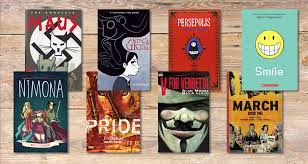The Art of Graphic Novels: A Visual Journey
Graphic novels are a unique form of storytelling that combines art and narrative in a powerful and captivating way. Unlike traditional novels, graphic novels use a combination of illustrations and text to convey a story, creating a visually rich experience for readers.
One of the key strengths of graphic novels is their ability to engage readers on multiple levels. The artwork in graphic novels adds depth and emotion to the story, allowing readers to immerse themselves in the narrative in a way that traditional text alone cannot achieve.
Graphic novels cover a wide range of genres, from superhero adventures to historical dramas to personal memoirs. This diversity allows for a rich tapestry of stories to be told through the medium of sequential art.
Many graphic novels have achieved critical acclaim and mainstream success, with some even being adapted into blockbuster films or television series. The visual nature of graphic novels makes them appealing to both avid readers and those new to the medium, offering a gateway into the world of comics and illustration.
Whether you’re drawn to intricate artwork, compelling storytelling, or simply enjoy exploring new forms of literature, graphic novels offer something for everyone. Take a journey into the world of graphic novels and discover the magic that unfolds when words and images come together in perfect harmony.
Unveiling the Art of Illustrative Storytelling: Understanding Graphic Novels
- What is the purpose of graphic novels?
- Is a graphic novel a real book?
- What defines a graphic novel?
- What is the difference between comic and graphic novel?
- What makes a book a graphic novel?
What is the purpose of graphic novels?
The purpose of graphic novels is to blend visual artistry with storytelling, creating a unique and immersive reading experience. By combining illustrations with text, graphic novels have the power to convey complex narratives, evoke emotions, and engage readers in a way that traditional literature alone may not achieve. Through their vivid imagery and creative storytelling techniques, graphic novels entertain, educate, provoke thought, and offer a diverse range of perspectives on various themes and subjects. They serve as a dynamic medium for expression, allowing artists and writers to push boundaries and explore new ways of communicating ideas through the fusion of words and images.
Is a graphic novel a real book?
The question of whether a graphic novel is a “real book” often arises due to the unique format of this medium. While some may argue that traditional novels consist solely of text, thereby questioning the legitimacy of graphic novels as books, it is essential to recognise that the term “book” encompasses a broad spectrum of literary forms. Graphic novels, with their blend of visual storytelling and narrative content, offer a distinct and valuable reading experience that is equally valid as any other form of literature. The artistry and craftsmanship involved in creating a graphic novel should not diminish its status as a legitimate and meaningful contribution to the world of literature.
What defines a graphic novel?
The term “graphic novel” encompasses a broad and diverse category of literature that combines visual storytelling with narrative content. What defines a graphic novel is its format as a book-length work that tells a complete story through the use of sequential art, often blending elements of comics, illustrations, and text. Unlike traditional comic books, graphic novels typically feature more complex storylines, character development, and thematic depth. They can span various genres and styles, from fiction to non-fiction, from superhero tales to intimate memoirs. Ultimately, what sets a graphic novel apart is its ability to engage readers through a cohesive and immersive visual narrative that transcends the boundaries of traditional storytelling mediums.
What is the difference between comic and graphic novel?
When considering the distinction between a comic and a graphic novel, it is essential to understand that while both mediums utilise sequential art and text to tell a story, they differ in terms of scope, complexity, and format. Comics typically refer to shorter, serialized narratives with a focus on episodic storytelling and often feature recurring characters in standalone or interconnected stories. On the other hand, graphic novels are longer-form works that present a complete, cohesive story within a single volume, allowing for more intricate plots, character development, and thematic exploration. While comics can encompass various genres and styles, graphic novels tend to offer a more immersive and substantial reading experience akin to traditional novels. Ultimately, the distinction lies in the depth of storytelling and the presentation of the narrative arc within each medium.
What makes a book a graphic novel?
A graphic novel is distinguished by its unique blend of visual storytelling and narrative depth. What sets a book apart as a graphic novel is the seamless integration of illustrations and text to convey a story, offering a multi-dimensional reading experience. Unlike traditional novels, graphic novels use the power of images to enhance the narrative, creating a dynamic interplay between art and storytelling. This fusion of visual and textual elements is what defines a book as a graphic novel, inviting readers into a world where words and pictures coalesce to form a truly immersive and engaging literary work.


Leave a Reply